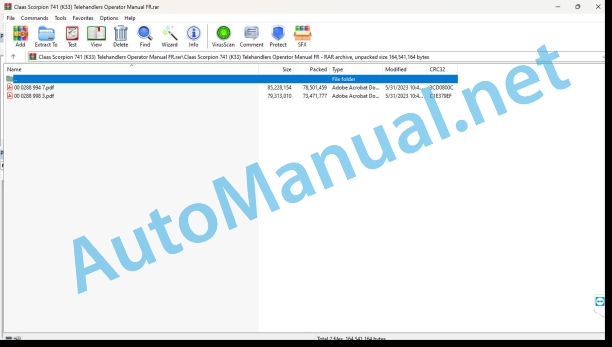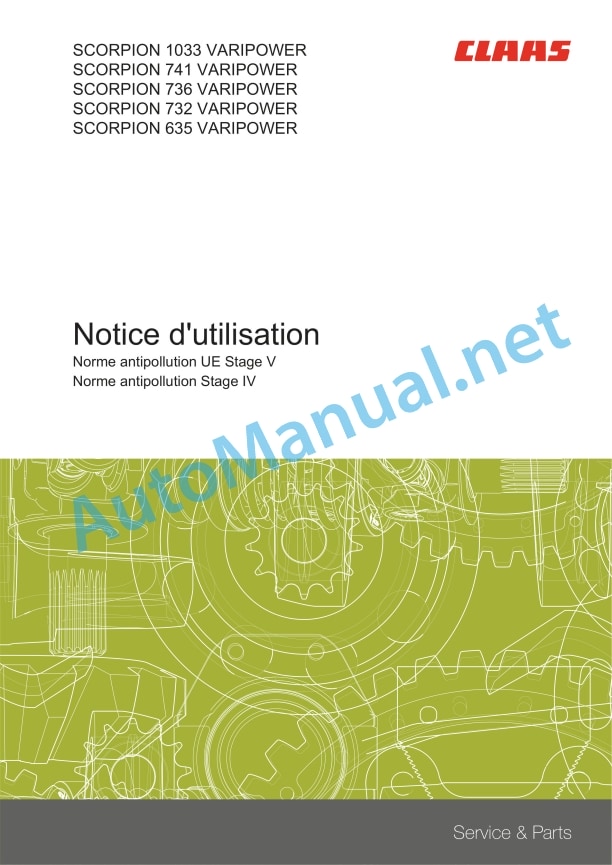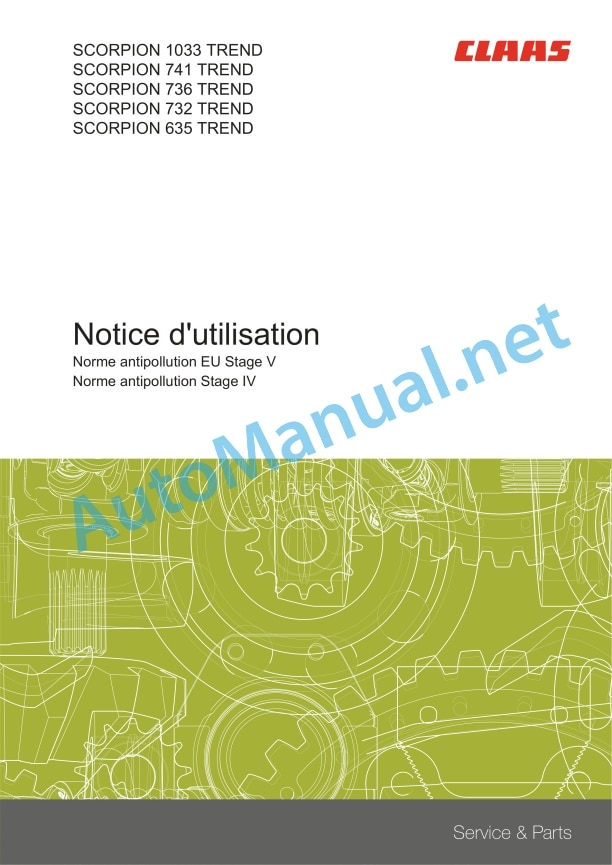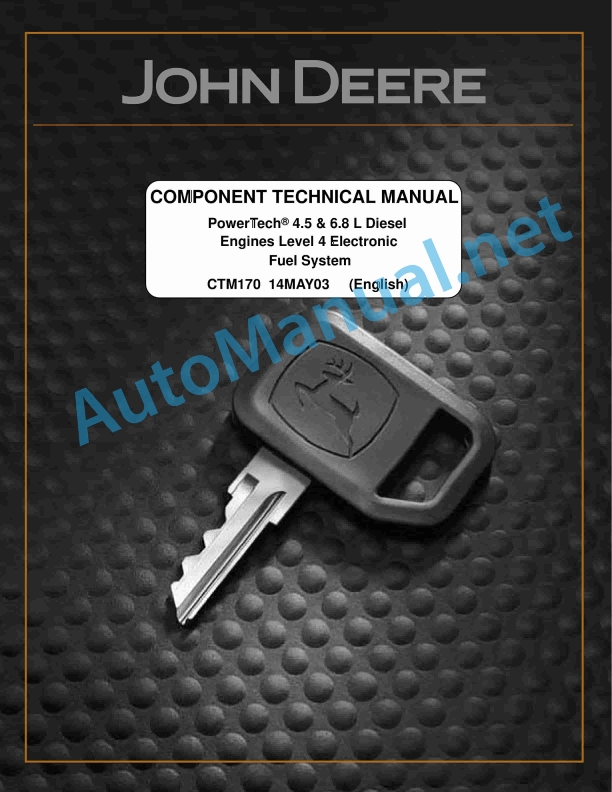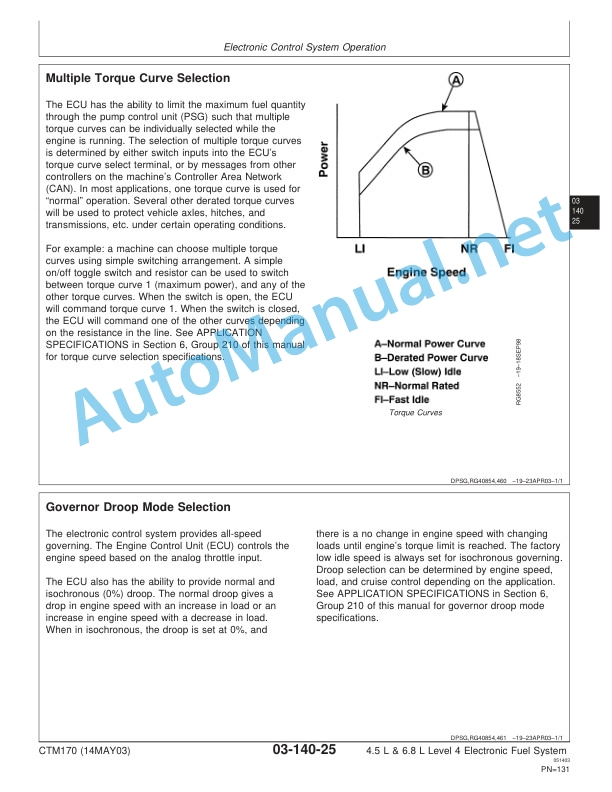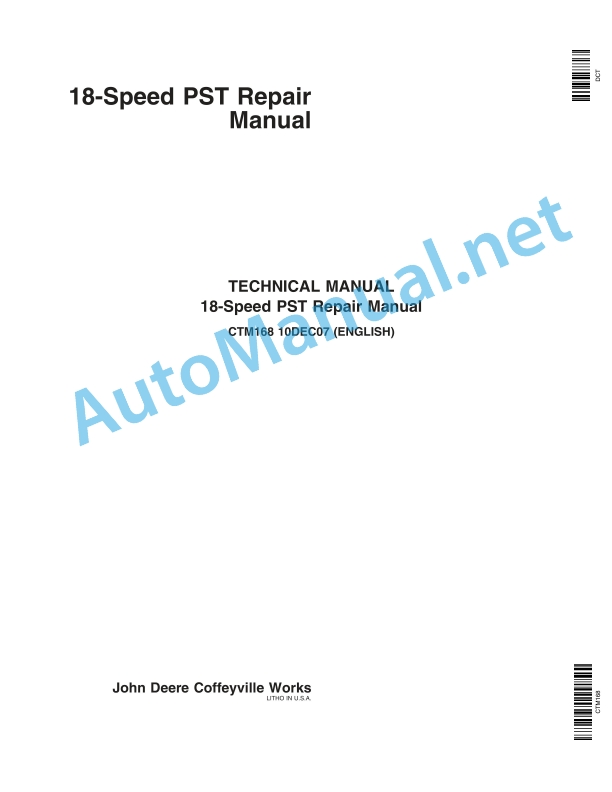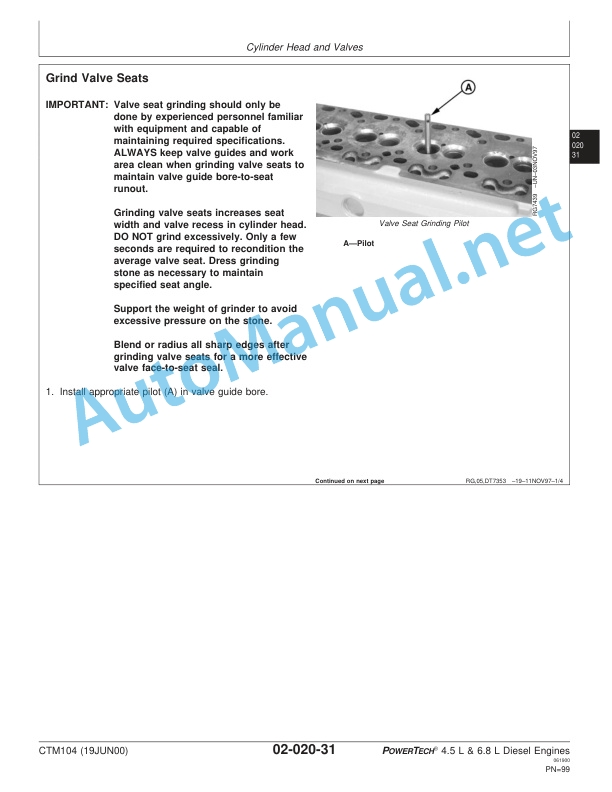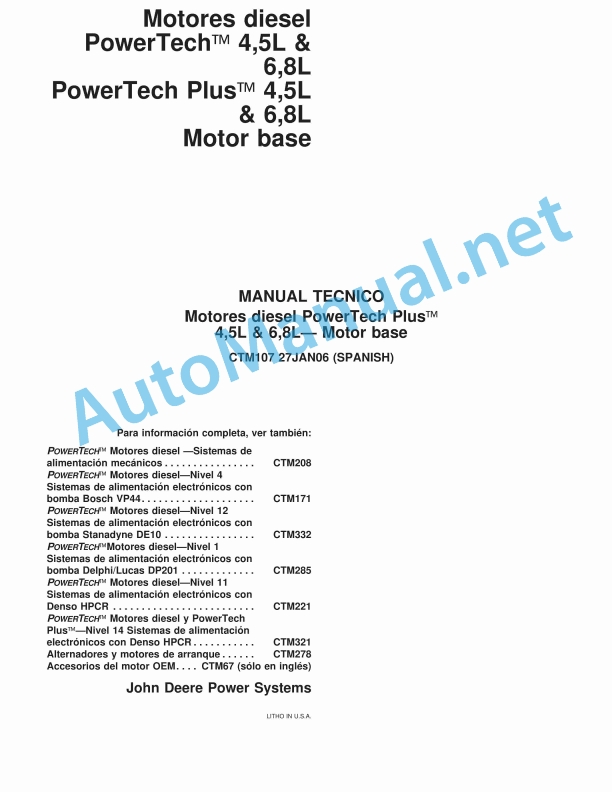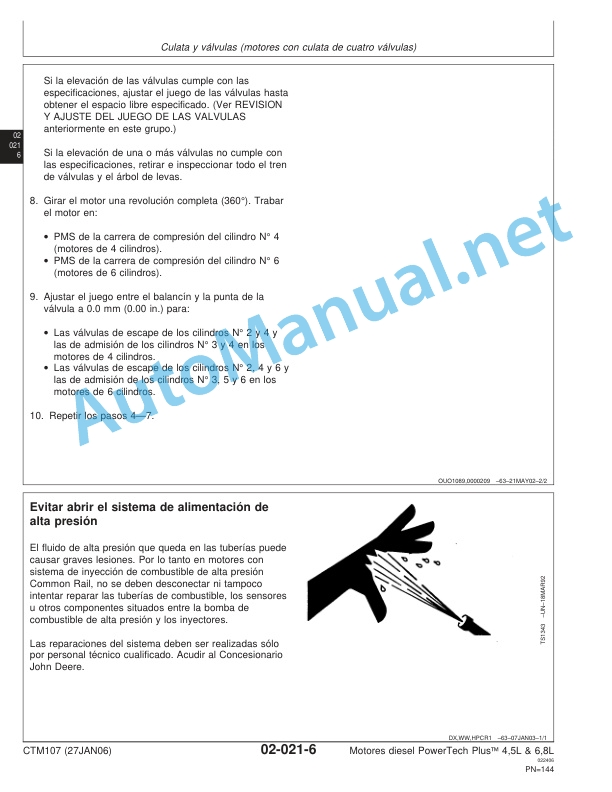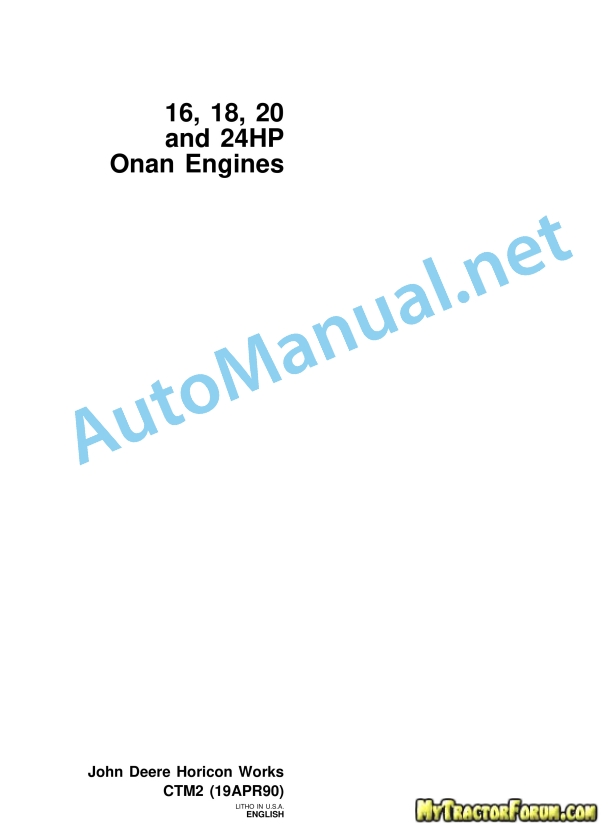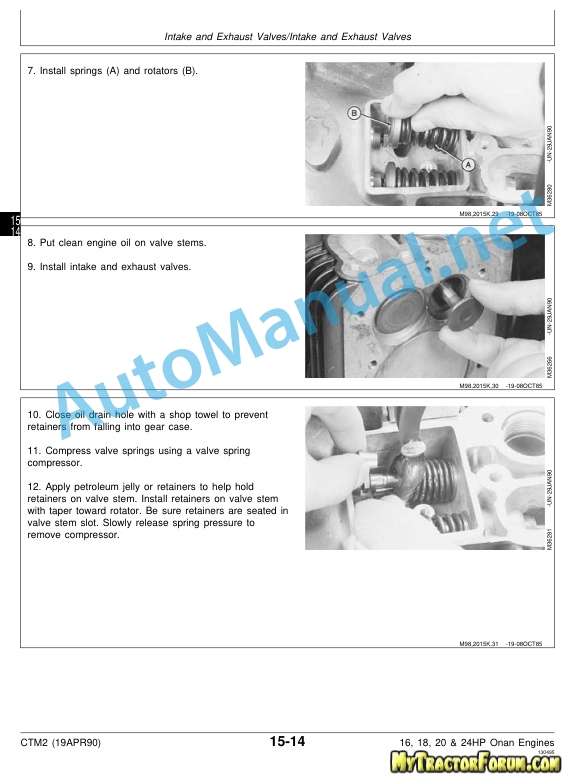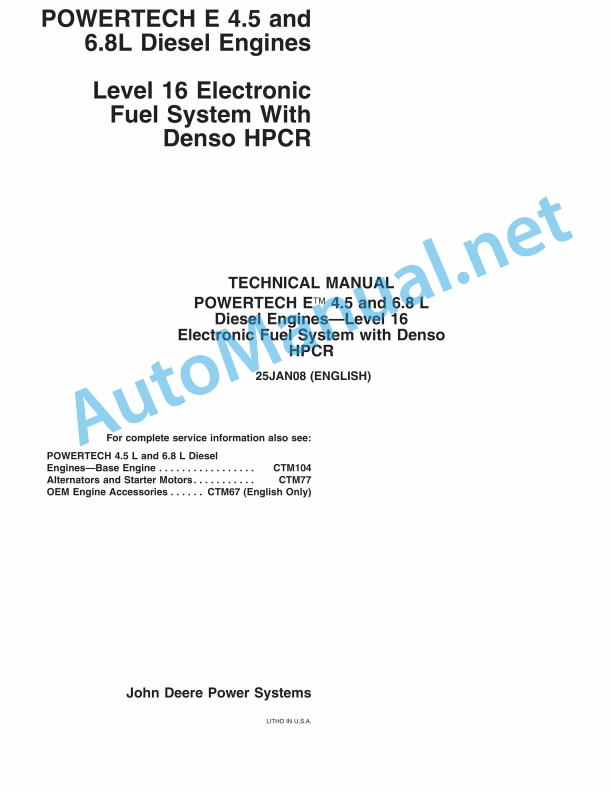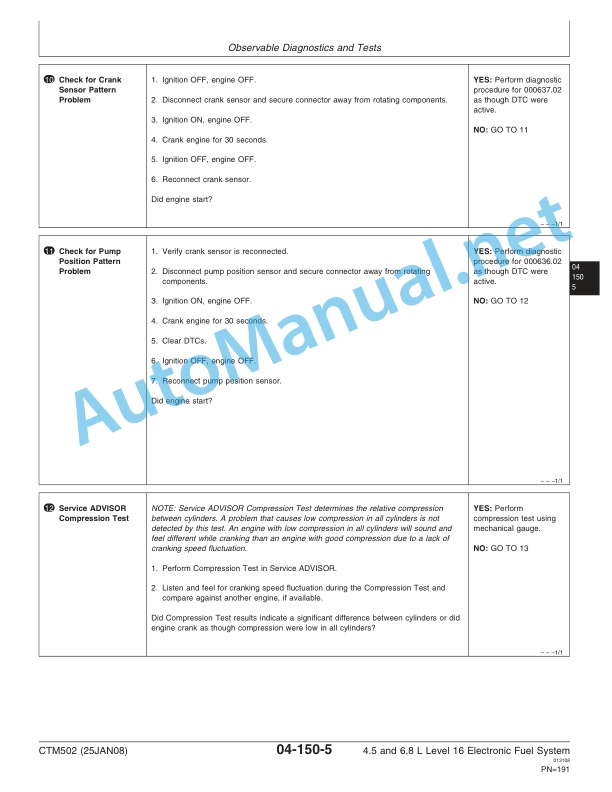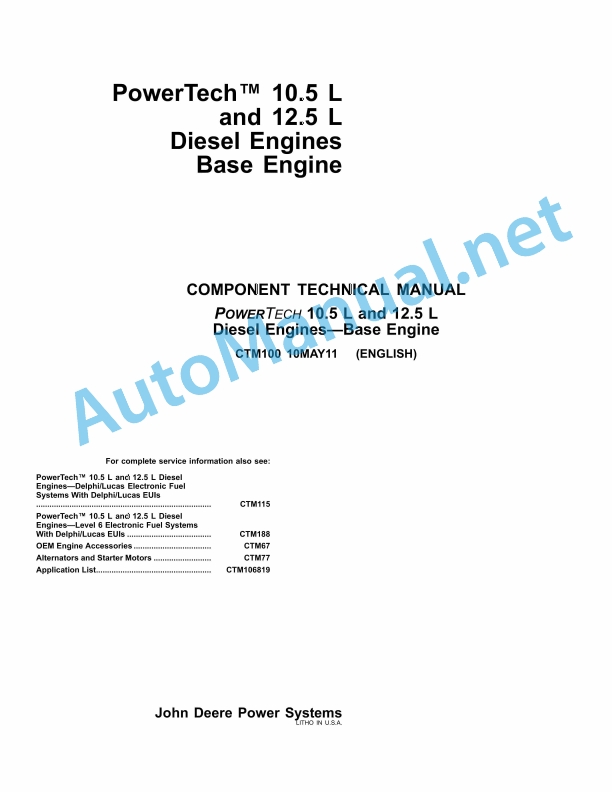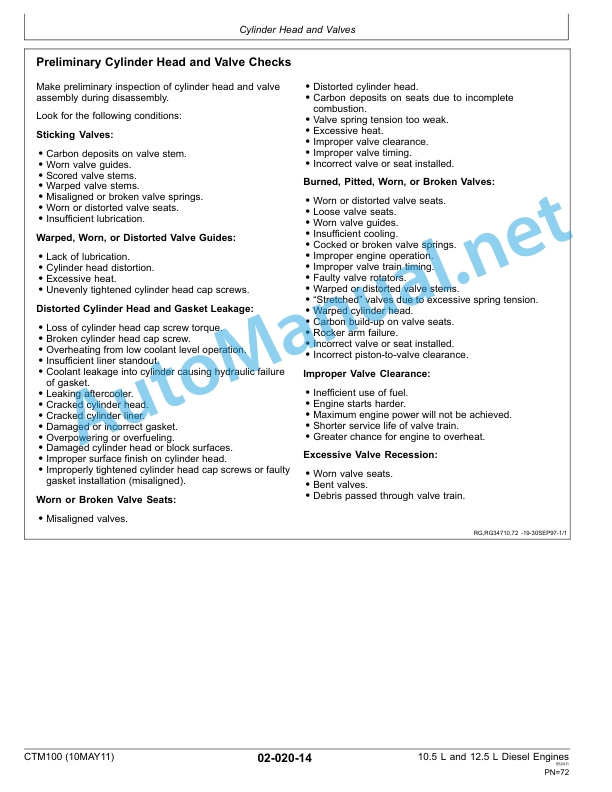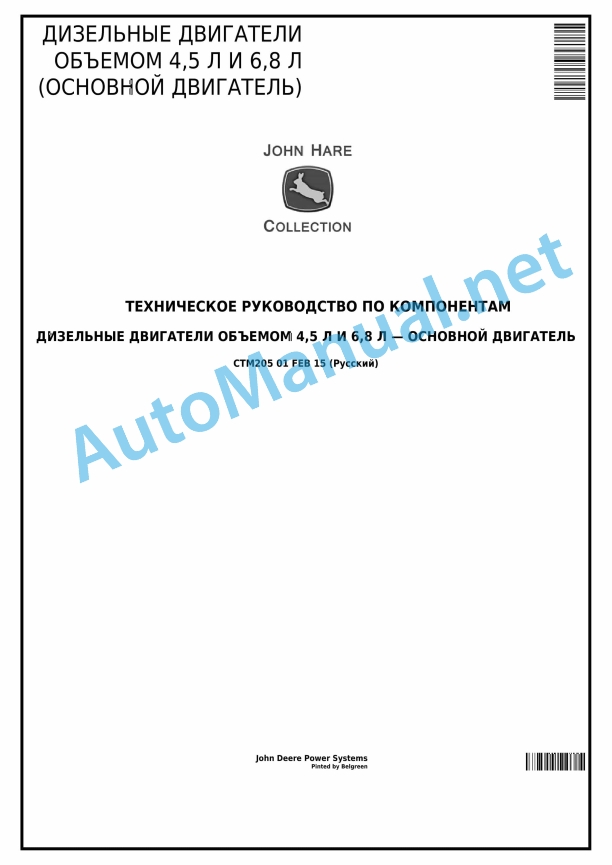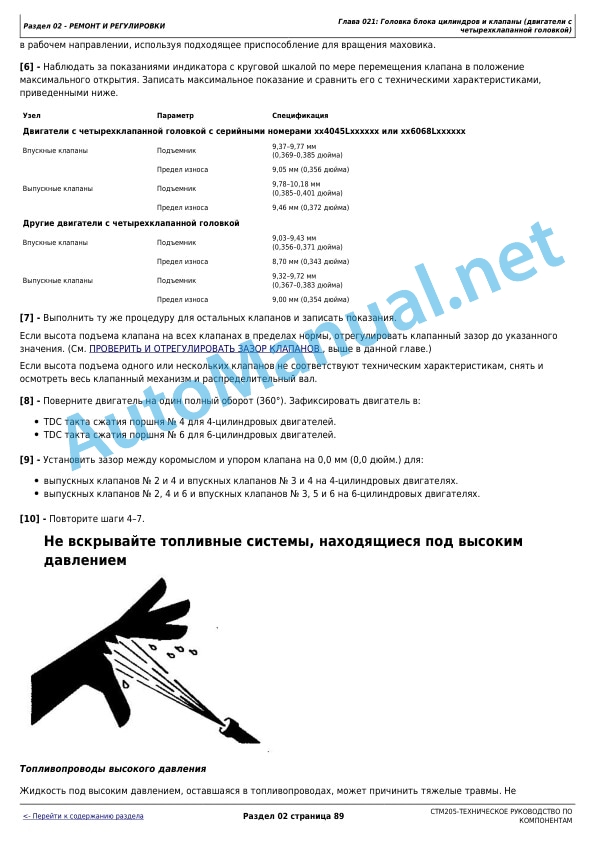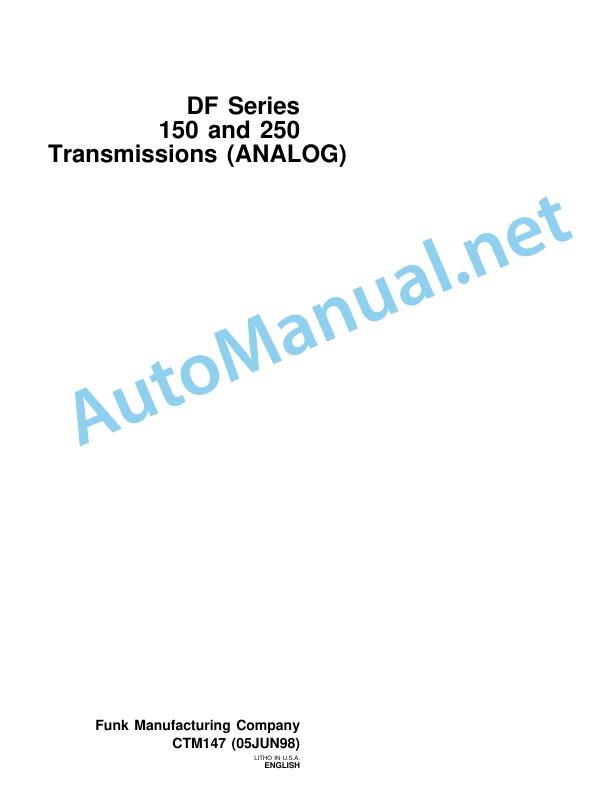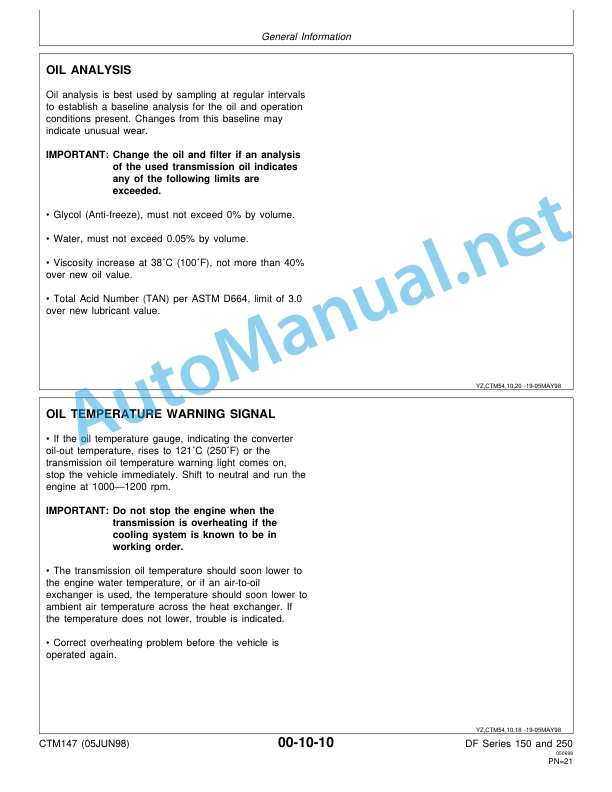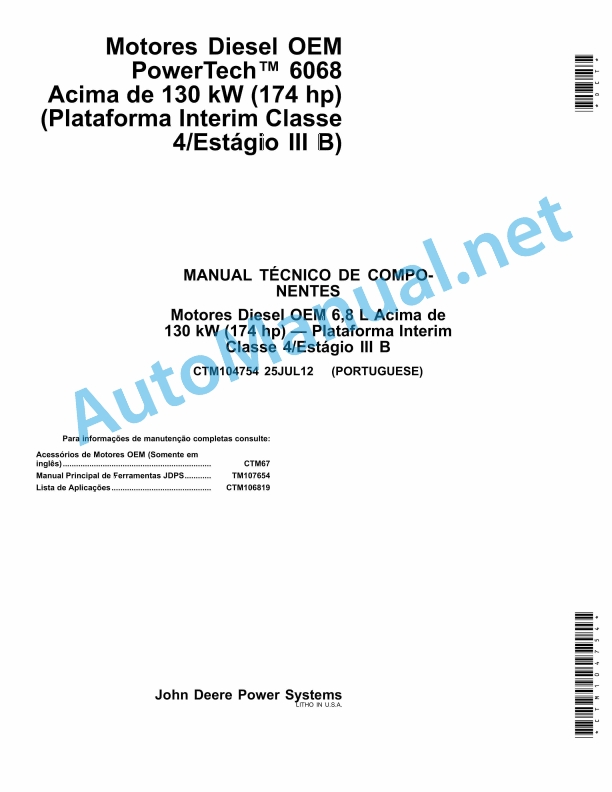Claas Scorpion 741 (K33) Telehandlers Operator Manual FR
$50.00
- Model: Scorpion 741 (K33) Telehandlers
- Type Of Manual: Operator Manual
- Language: FR
- Format: PDF(s)
- Size: 145 MB
File List:
00 0288 994 7.pdf
00 0288 998 3.pdf
00 0288 994 7.pdf:
SCORPION 1033 VARIPOWERSSCORPION 741 VARIPOWERSSCORPION 736 VARIPOWERSCORPION 732 VARIPOWERSSCORPION 635 VARIPOWER
Contents
1 Introduction
1.1 General instructions
1.1.1 Validity of the notice
1.1.2 Information regarding this user manual
1.1.3 Icons and notes
1.1.4 Optional equipment
1.1.5 Qualified specialist workshop
1.1.6 Notes on maintenance
1.1.7 Notes regarding warranty
1.1.8 Spare parts and technical questions
1.2 Use in accordance with instructions
1.2.1 Use in accordance with instructions
1.2.2 Reasonably foreseeable misuse
2 Security
2.1 Recognize the warnings
2.1.1 Warning pictogram
2.1.2 Signal word
2.2 Safety tips
2.2.1 Meaning of the instructions for use
2.2.2 Observe warning pictograms and warnings
2.2.3 Requirements for all people who work with the machine
2.2.4 Children at risk
2.2.5 Dangerous areas
2.2.6 Passengers
2.2.7 Coupling the machine and work equipment
2.2.8 Couple the machine and the trailer
2.2.9 Constructive modifications
2.2.10 Optional equipment and spare parts
2.2.11 Protection against rollover or against falling rocks
2.2.12 Checking the running machine
2.2.13 Operation only after proper commissioning
2.2.14 Technical condition
2.2.15 Risks in the event of damage to the machine
2.2.16 Respect the technical threshold values
2.2.17 Maintain safety devices in operational capacity
2.2.18 Personal protective equipment
2.2.19 Wear suitable clothing
2.2.20 Remove dirt and moving objects
2.2.21 Field of vision and vision aids
2.2.22 Prepare the machine for road travel
2.2.23 Risks when traveling on the road and in the fields
2.2.24 Tow or secure the machine
2.2.25 Loads lifted
2.2.26 Stable ground
2.2.27 Park the machine correctly
2.2.28 Inappropriate operating consumables
2.2.29 Safety in handling operating consumables and secondary consumable materials
2.2.30 Fuel is harmful to health
2.2.31 Refrigerants are harmful to health
2.2.32 Environmental protection and disposal
2.2.33 Never put chemicals in the cabin
2.2.34 Avoiding fires
2.2.35 Fatal electric shocks from overhead power lines
2.2.36 Behavior in the event of voltage discharge from overhead power lines and lightning strikes
2.2.37 Electric shock from the electrical system
2.2.38 Vibrations can be harmful to health
2.2.39 Liquids under pressure
2.2.40 Toxic exhaust gases
2.2.41 Hot surfaces
2.2.42 Safety when getting on and off
2.2.43 Work only on the stopped machine
2.2.44 Maintenance and repair work
2.2.45 Risks due to welding work
2.2.46 Checking and charging the battery
2.3 Safety label
2.3.1 Structure of warning pictograms
2.3.2 Overview of warning pictograms
SCORPIO 1033
SCORPIO 741 / 736 / 732 / 635
2.3.3 Warning pictograms on the machine
Warning pictogram
Warning pictogram
Warning pictogram
Warning pictogram
Warning pictogram
Warning pictogram
Warning pictogram
Warning pictogram
Warning pictogram
Warning pictogram
Warning pictogram
3 Description of the machine
3.1 Overview and mode of operation
3.1.1 Overview of the telescopic loader
SCORPIO 1033
SCORPIO 741 / 736 / 732 / 635
3.2 Nameplates and identification numbers
3.2.1 Telescopic loader nameplate
3.2.2 CE conformity
3.2.3 Cab nameplate
3.3 Machine information
3.3.1 Position of stickers
SCORPIO 1033
SCORPIO 741 / 736 / 732 / 635
3.3.2 Stickers
Tie-down point
Hanging point, lifting point
Safety point
Switching position*
Cooling liquid
Windshield washer fluid
Sound power level
EMERGENCY EXIT
Urea solution
Hydraulic oil
Reservoir tubing
Wheel nuts
Lubrication plan
230 V preheating device*
Tire pressure table
Brake fluid
Load curve
Control lever
Slow drive device and hand throttle*
Rear hydraulic system*
Work lights*
Maximum support load*
Manual lubrication points*
High Flow*
Front power outlet*
120 V preheater*
Maximum load capacity*
Refrigerant*
4 Control and display elements
4.1 Cabin and driving position
4.1.1 Driving position
4.1.2 Front control elements
4.1.3 Control elements in the side console
4.1.4 Control elements in the right roof console
4.1.5 Control elements in the left roof console
4.1.6 Heating and air conditioning control elements
4.1.7 Control lever
4.1.8 Commodo
4.1.9 Ignition lock
4.1.10 Display device on the steering column
4.1.11 Load torque indicator
4.1.12 Level indicator
4.1.13 Air brake system pressure gauge*
4.1.14 Radio
4.1.15 Armrest
4.1.16 Control elements on the telescopic arm
4.2 On-board information system
4.2.1 Warning messages and malfunction messages
4.2.2 3.5” display unit
Menu
Menu
4.2.3 7’’ display unit*
Menu
Menu
4.2.4 Status symbols on the display unit
5 Technical characteristics
5.1 SCORPIO
5.1.1 Dimensions SCORPION 1033
5.1.2 Dimensions SCORPION 741
5.1.3 Dimensions SCORPION 736
5.1.4 Dimensions SCORPION 732
5.1.5 Dimensions SCORPION 635
5.1.6 Weight
5.1.7 Charging
5.1.8 Explanations of the load curve
Icons on load curves
5.1.9 SCORPION 1033 load curve
5.1.10 SCORPION 741 load curve
5.1.11 SCORPION 736 load curve
5.1.12 SCORPION 732 load curve
5.1.13 SCORPION 635 load curve
5.1.14 Static and dynamic controls
5.1.15 Support loads
Calcnound pressure
Calculation example for front tires on firm ground
Calculation example for front tires on soft ground
Calculation example for rear tires on firm ground
Calculation example for rear tires on soft ground
Support surface on firm ground
Support surface on soft ground
Support surface with base
Calculation example for front tires with base
5.1.16 Vibration
Vibrations transmitted to the hand-arm system
Vibrations transmitted to the whole body
5.1.17 Sound pressure level and sound power level
5.1.18 Operating temperature
5.1.19 TCD 3.6 L4 diesel engine
5.1.20 TCD 3.6 L4 diesel engine (D914)
5.1.21 CO2 emissions from the diesel engine
5.1.22 Chassis
Transmission
Walking speed
5.1.23 Axles
Front axle
Rear axle
5.1.24 Work equipment
5.1.25 Tire set and tire pressure
5.1.26 Snow chains* or tire protection chains*
5.1.27 Tire foaming*
5.1.28 Brake
5.1.29 Management
5.1.30 Telescopic arm
5.1.31 Hitch clevis
Approved as an agricultural or forestry tractor vehicle
Approval as self-propelled work equipment
5.1.32 Electrical system
5.1.33 Hydraulic system
Working hydraulics
5.1.34 Limitations of the SCORPION 1033 field of vision
Limitation of field of vision with suspended load
Limitation of field of vision with load
Limitation of the field of vision when loading a truck
5.1.35 Limitations of the SCORPION 741 / 736 / 732 field of view
Limitation of field of vision with suspended load
Limitation of field of vision with load
Limitation of the field of vision when loading a truck
5.1.36 Limitations of the SCORPION 635 field of vision
Limitation of field of vision with suspended load
Limitation of field of vision with load
Limitation of the field of vision when loading a truck
5.1.37 Static stability conditions during work
Conditions for lifting work
Conditions for transport work
5.1.38 Static stability conditions during work with lifting eye*
Conditions for lifting work
Conditions for transport work
5.2 Operating consumables
5.2.1 Lubricants
5.2.2 Hydraulic oil
5.2.3 Brake fluid
5.2.4 Coolant
5.2.5 Fuels
5.2.6 Refrigerant
5.2.7 Windshield washer fluid
6 Preparing the machine
6.1 Stop and immobilize the machine
6.1.1 Stop and immobilize the machine
6.1.2 Lower work equipment to the ground
6.1.3 Switch on the battery switch
6.1.4 Block the machine to avoid any risk of movement
6.1.5 Opening and closing the folding wedges*
6.1.6 Stopping transmission with the emergency stop switch
6.1.7 Connect parking position
6.2 Access workstations and maintenance stations
6.2.1 Entering and leaving the cabin
Access and descent
Enter the cabin
Leave the driver’s cabin
6.3 Diesel engine
6.3.1 Select the authorized fuel
6.3.2 Comply with the fuel specification
6.3.3 Comply with urea specifications
Use of urea solution
Purity and standard of urea solution
Storage of urea solution in tanks and containers
Properties of urea solution at high and low external temperatures
6.3.4 At low temperatures use winter fuel
6.3.5 Refueling the machine
Refueling with urea solution
6.4 Work equipment
6.4.1 Dismantle work equipment
6.4.2 Eliminate pressure in the hydraulic system
Eliminate hydraulic pressure in control circuit III
Pressure relief* of control circuit III / control circuit III High Flow*
Eliminate hydraulic pressure in the IV control circuit*
6.4.3 Disconnect the hydraulic lines from the control circuit III
Disconnect the control circuit connections III
Disconnect the connections from the control circuit III switching*
Disconnect the leaking oil connection*
6.4.4 Disconnect the hydraulic lines from the III High Flow* control circuit
6.4.5 Separate the multicoupler*
6.4.6 Separate the front power outlet*
6.4.7 Remove the work equipment from the mechanical tool holder*
6.4.8 Remove the work equipment from the hydraulic tool holder*
6.4.9 Assemble work equipment
6.4.10 Place the work equipment on the mechanical tool holder*
6.4.11 Place the work equipment on the hydraulic tool holder*
6.4.12 Connect the hydraulic lines of the control circuit III
Align the hydraulic line fittings
Connect the control circuit connections III
Connect the connections of the control circuit III switching*
Connect the leak oil connection*
6.4.13 Connect the hydraulic lines of the III High Flow* control circuit
6.4.14 Connect the multicoupler*
6.4.15 Connect the front power outlet*
6.4.16 Check that the work equipment is properly locked
Visual control
Mechanical control
6.4.17 Connect the hydraulic lines of the IV control circuit*
Connect the IV control circuit connections
6.4.18 Disconnect the hydraulic lines from the IV control circuit*
6.4.19 Connect the rear power socket*
6.5 Coupling device
6.5.1 Hitch the trailer with tipping function*
6.5.2 Unhitching the trailer with tipper function*
6.6 Load the machine
6.6.1 Prepare the machine for loading
6.6.2 Load the machine
6.6.3 Secure the machine
6.6.4 Drive the machine onto a loading surface
6.6.5 Driving the machine off a loading surface
7.1 Driving and transporting
7.1.1 Prepare the travel mode
7.1.2 Prepare for road travel
7.1.3 Carry out a functional check
7.1.4 Driving
Start the machine
7.1.5 Put work equipment in transport position
7.1.6 Pick up and unload the equipment
7.1.7 Level
Level forward
Level in reverse
7.1.8 Load the transport vehicle
7.1.9 Taking the load from the ground
7.1.10 Grasp the load placed at height
7.1.11 Place the load on the ground
7.1.12 Place a load at height
7.1.13 Tow the machine out of the risk zone
Towing points and safety points
Prepare the machine for towing
Tow the machine
After the towing process
7.1.14 Charging cycle counter*
Count charging cycles
Reset the charging cycle counter
7.2 Diesel engine
7.2.1 Start the diesel engine
Synchronize direction
Heat the hydraulic oil to its operating temperature
7.2.2 Stopping the diesel engine
7.2.3 Preheating device for hydraulic oil and coolant (230 V / 120 V)*
Activate preheating
Disable preheating
7.2.4 Fuel preheating device (12 V)*
7.3 Chassis
7.3.1 Selection of direction of travel
7.3.2 Select speed range
7.3.3 Slow driving device*
7.3.4 Level compensation*
7.3.5 Oscillation damping*
7.3.6 Manual accelerator*
7.3.7 The advance pump high pressure valves open and close
7.4 Brake
7.4.1 Braking the machine
7.4.2 Applying and releasing the parking brake
7.4.3 Mechanically release and apply the parking brake
Release the parking brake
Apply the parking brake
7.5 Management
7.5.1 Set steering mode
Adjust the front steering wheels
Adjust the four steering wheels
Adjust crab walking
Adjust manual crabbing without lock button
Adjust manual crab walking with lock button
Correct rear axle steering angle
7.6 Work equipment
7.6.1 Prepare operations with work equipment
7.6.2 Blocking and unblocking the working hydraulic system
7.6.3 Function of the load torque indicator
7.6.4 Checking the load torque indicator
7.6.5 Raising and lowering the telescopic arm
Lifting the telescopic arm
Lowering the telescopic arm
7.6.6 Extending and retracting the telescopic boom
Take out the telescopic boom
Telescopic boom retraction
7.6.7 Tilting work equipment backwards and forwards
Tilt work equipment upwards
Tip work equipment down
7.6.8 Automatic bucket return*
7.6.9 Control circuit III
Use control circuit III
Adjust the flow rate*
Switch* control circuit III
7.6.10 Control circuit III High Flow*
Control the III High Flow control circuit
Adjust the flow rate*
7.6.11 Control circuit IV*
Control of the IV control circuit
Adjust the flow rate*
7.6.12 Tilt cylinder lock*
7.6.13 Emergency descent*
Activate emergency descent
7.7 Coupling device
7.7.1 Overview of hitch clevises
7.7.2 Handling the automatic hitch clevis
Adjust the height of the hitch clevis
Hitch the trailer
Unhitch the trailer
7.7.3 Handle the hitch eyebolt
Adjust the height of the hitch clevis
Hitch the trailer
Unhitch the trailer
7.7.4 Handling the ball hitch
Adjust the height of the hitch clevis
Adjust the height of the restraint
Hitch the trailer
Unhitch the trailer
7.7.5 Handle the Cuna hook of the hitch clevis
Adjust the height of the hitch clevis
Hitch the trailer
Unhitch the trailer
7.7.6 Handle the hitch for maneuvers
Hitch the trailer
Unhitch the trailer
7.7.7 Operating the automatic pin coupling
Hitch the trailer
Unhitch the trailer
7.7.8 Handling the pin coupling
Hitch the trailer
Unhitch the trailer
7.7.9 Using the hitch hook
Adjusting the hitch clevis
Hitch the trailer
Unhitch the trailer
Adjusting the hitch clevis
Hitch the trailer
Unhitch the trailer
7.7.10 Connect pneumatic braking*
7.7.11 Use of pneumatic braking*
7.7.12 Connecting and disconnecting the antifreeze pump for air braking*
7.7.13 Connect the hydraulic hitch brake*
1-pipe system*
Connect the brake hose
Remove the brake hose
2-pipe system*
Connect the brake hose
Remove the brake hose
7.7.14 Use the hydraulic hitch brake*
7.7.15 Handling the trailer with tilting function
Raising and lowering the tipper
Raising and lowering the tipper
7.8 Electrical and electronic system
7.8.1 Electronic immobilizer system*
Program the ignition key
Clear ignition key
7.8.2 Camera system*
Adjust the side camera*
Correct the angle
Adjust the rear view camera*
Correct the angle
7.8.3 Reversing alarm
Reverse warning buzzer
7.8.4 Adjust the rotating beacon*
Connecting and disconnecting the rotating beacon
Remove the rotating beacon
Fold down* the rotating beacon
7.8.5 Connecting and disconnecting the clearance light
7.9 Cabin and driving position
7.9.1 Open the emergency exit
7.9.2 Adjusting the driver’s seat
7.9.3 Put on the seat belt
7.9.4 Adjust the steering column
Adjust the steering wheel distance
Adjust the steering wheel height
Adjust the steering wheel tilt
7.9.5 Adjust heating, ventilation and air conditioning*
Regulate the temperature
Adjust the fan
Turn the air conditioning on and off*
7.9.6 Opening and closing the cabin window
Open the upper part of the cabin door a little
Opening the upper part of the cabin door to 180°
Opening the rear cabin window
7.9.7 Adjusting the sun visor*
7.9.8 Switching the interior cabin lighting on and off
7.9.9 Adjust vision aids
Overview
Adjust the interior mirror
Adjust the right side mirror and rear view mirror
Adjust the left side mirror and rear view mirror
Adjust the front vision aid*
Adjust rear vision assist*
7.9.10 Activate the windshield washer
Activate the windshield washer
Activate the rear window washer
7.9.11 Remove the front protective grille*
7.10 Central lubrication system
7.10.1 Central lubrication system*
8 Faults and solutions
8.1 Overview
8.1.1 Reset maintenance display
8.1.2 Overview of error codes
8.1.3 Overview of error codes
8.2 Diesel engine
8.2.1 Overview of faults on the diesel engine
8.2.2 Overview of air filter system failures
8.2.3 Overview of exhaust aftertreatment system failures
Warnin and malfunction strategies
Urea tank symbols
Exhaust gas aftertreatment system symbols
Diesel particulate filter symbols*
Override power reduction
8.3 Brake
8.3.1 Overview of faults in the braking system
8.4 Management
8.4.1 Overview of faults in the steering system
8.5 Work equipment
8.5.1 Overview of failures in work equipment
8.6 Hydraulic system
8.6.1 Overview of faults in the hydraulic system
8.7 Electrical and electronic system
8.7.1 External startup process
Connect the external battery
Disconnect the external battery
8.7.2 Overview of faults in the electrical system
8.7.3 Overview of electronic immobilizer system faults*
8.7.4 Fuses in the engine compartment
8.7.5 Fuses in the cabin
8.7.6 Relays in the engine compartment
8.7.7 Relays in the cabin
8.7.8 Prepare welding work
8.8 Cabin and driving position
8.8.1 Overview of faults in the heating system
Heating power
Cooling power
8.9 Central lubrication system
8.9.1 Overview of central lubrication system failures*
9 Maintenance
9.1 Preparing for maintenance
9.1.1 Place the machine in maintenance position
9.1.2 Install the safety stand*
9.1.3 Opening and closing the engine hood
9.2 Maintenance intervals
9.2.1 Every 10 operating hours or daily
9.2.2 Every 50 operating hours
9.2.3 After the first 100 hours of operation
9.2.4 Every 250 operating hours
9.2.5 After the first 500 hours of operation
9.2.6 Every 500 operating hours
9.2.7 Every 1000 operating hours
9.2.8 Every 1500 operating hours
9.2.9 Every 2 years
9.2.10 Every 2000 operating hours
9.2.11 Every 3000 operating hours
9.2.12 Every 4000 operating hours
9.2.13 Every 6000 operating hours
9.2.14 Every 10,000 operating hours
9.3 Lubrication plan
9.3.1 Lubricate the lubrication points every 50 operating hours
Central lubrication points*
Hitch* towing hook and lifting eye*
9.3.2 Lubricate the lubrication points every 250 operating hours
9.4 Diesel engine
9.4.1 Cleaning the diesel engine
9.4.2 Complicating factors for
9.4.3 Checking the oil level of the diesel engine (TCD 3.6 L4 / TCD 3.6 L4 (D914))
Check the oil level
9.4.4 Drain the condensation water from the fuel pre-filter (TCD 3.6 L4)
9.4.5 Draining the condensation water from the fuel pre-filter (TCD 3.6 L4 (D914))
9.4.6 Empty condensate and residue from the fuel tank
9.4.7 Bleeding air from the fuel system (TCD 3.6 L4 / TCD 3.6 L4 (D914))
9.4.8 Cleaning the cooling system (TCD 3.6 L4 / TCD 3.6 L4 (D914))
9.4.9 Adjust the reversible fan*
9.4.10 Checking the coolant level (TCD 3.6 L4 / TCD 3.6 L4 (D914))
Check the level
Add coolant
9.4.11 Clean or replace air filter elements (TCD 3.6 L4 (D914))
Remove the filter element
Clean the filter housing and cover
Replace the safety element
Install the filter element
9.4.12 Clean or replace the air filter elements (TCD 4.1 L4 / TCD 3.6 L4)
Remove the filter element
Clean the filter element
Clean the filter housing and cover
Replace the safety element
Install the filter element
9.4.13 Clean the air filter dust evacuation valve (TCD 3.6 L4 (D914))
Clean the dust evacuation valve
Check dust evacuation*
9.4.14 Clean the air filter dust evacuation valve (TCD 4.1 L4 / TCD 3.6 L4)
Clean the lid
Clean the dust evacuation valve
9.4.15 Regenerate the exhaust gas aftertreatment system
Automatic regeneration
Manually start regeneration
Interrupt regeneration
Regenerate the diesel particulate filter*
9.5 Chassis
9.5.1 Check the wheels, tires and tire pressure
9.5.2 Check tire pressure
9.5.3 Checking the tightening torque of the wheel nuts
9.6 Brake
9.6.1 Check the operation and effectiveness of the service brake
9.6.2 Checking the operation and effectiveness of the parking brake
9.6.3 Checking the brake fluid level of the service brake
Top up brake fluid
9.6.4 Bleed the compressed air reservoirs of the pneumatic brake*
9.7 Management
9.7.1 Check steering operation
9.8 Telescopic arm
9.8.1 Lubricate the sliding faces on the telescopic boom
9.8.2 Lubricate the rear sliding elements
9.8.3 Check the front sliding elements
9.8.4 Maintaining piston rods in good condition
9.9 Hydraulic system
9.9.1 Check the hydraulic oil level
Check the level
Add hydraulic oil
9.9.2 Check hydraulic hoses
Marking of hydraulic hoses
9.10 Electrical and electronic system
9.10.1 Lighting control
9.10.2 Checking the operation of the load torque limitation
Prepare the machine
Check the load torque limitation with the standard fork
Check the load torque limitation with the special fork
9.11 Cabin and driving position
9.11.1 Check the condition and operation of the seat belt
9.11.2 Clean or replace the cabin air pre-filter*
9.11.3 Checking the windshield washer level
9.12 Central lubrication system
9.12.1 Check the level of the central lubrication system*
Check the level
Add lubricant
9.13 Assembled parts / Machine casing
9.13.1 Cleaning the machine
Before cleaning
Cleaning
After cleaning
9.13.2 Check fire extinguishers
10 Decommissioning and disposal
10.1 General instructions
10.1.1 Deactivation and disposal
11 CE declaration of conformity
11.1 SCORPIO
11.1.1 CE declaration of conformity (model)
00 0288 998 3.pdf:
Instructions for use
Contents
1 Introduction
1.1 General instructions
1.1.1 Validity of the notice
1.1.2 Information regarding this user manual
1.1.3 Icons and notes
1.1.4 Optional equipment
1.1.5 Qualified specialist workshop
1.1.6 Notes on maintenance
1.1.7 Notes regarding warranty
1.1.8 Spare parts and technical questions
1.2 Use in accordance with instructions
1.2.1 Use in accordance with instructions
1.2.2 Reasonably foreseeable misuse
2 Security
2.1 Recognize the warnings
2.1.1 Warning pictogram
2.1.2 Signal word
2.2 Safety tips
2.2.1 Meaning of the instructions for use
2.2.2 Observe warning pictograms and warnings
2.2.3 Requirements for all people who work with the machine
2.2.4 Children at risk
2.2.5 Dangerous areas
2.2.6 Passengers
2.2.7 Coupling the machine and work equipment
2.2.8 Couple the machine and the trailer
2.2.9 Constructive modifications
2.2.10 Optional equipment and spare parts
2.2.11 Protection against rollover or against falling rocks
2.2.12 Checking the running machine
2.2.13 Operation only after proper commissioning
2.2.14 Technical condition
2.2.15 Risks in the event of damage to the machine
2.2.16 Respect the technical threshold values
2.2.17 Maintain safety devices in operational capacity
2.2.18 Personal protective equipment
2.2.19 Wear suitable clothing
2.2.20 Remove dirt and moving objects
2.2.21 Field of vision and vision aids
2.2.22 Prepare the machine for road travel
2.2.23 Risks when traveling on the road and in the fields
2.2.24 Tow or secure the machine
2.2.25 Loads lifted
2.2.26 Stable ground
2.2.27 Park the machine correctly
2.2.28 Inappropriate operating consumables
2.2.29 Safety in handling operating consumables and secondary consumable materials
2.2.30 Fuel is harmful to health
2.2.31 Refrigerants are harmful to health
2.2.32 Environmental protection and disposal
2.2.33 Never put chemicals in the cabin
2.2.34 Avoiding fires
2.2.35 Fatal electric shocks from overhead power lines
2.2.36 Behavior in the event of voltage discharge from overhead power lines and lightning strikes
2.2.37 Electric shock from the electrical system
2.2.38 Vibrations can be harmful to health
2.2.39 Liquids under pressure
2.2.40 Toxic exhaust gases
2.2.41 Hot surfaces
2.2.42 Safety when getting on and off
2.2.43 Work only on the stopped machine
2.2.44 Maintenance and repair work
2.2.45 Risks due to welding work
2.2.46 Checking and charging the battery
2.3 Safety marking
2.3.1 Structure of warning pictograms
2.3.2 Overview of warning pictograms
SCORPIO 1033
SCORPIO 741 / 736 / 732 / 635
2.3.3 Warning pictograms on the machine
Warning pictogram
Warning pictogram
Warning pictogram
Warning pictogram
Warning pictogram
Warning pictogram
Warning pictogram
Warning pictogram
Warning pictogram
Warning pictogram
Warning pictogram
3 Description of the machine
3.1 Overview and mode of operation
3.1.1 Overview of the telescopic loader
SCORPIO 1033
SCORPIO 741 / 736 / 732 / 635
3.2 Nameplates and identification numbers
3.2.1 Telescopic loader nameplate
3.2.2 CE conformity
3.2.3 Cab nameplate
3.3 Machine information
3.3.1 Position of stickers
SCORPIO 1033
SCORPIO 741 / 736 / 732 / 635
3.3.2 Stickers
Tie-down point
Hanging point, lifting point
Safety point
Cooling liquid
Windshield washer fluid
Sound power level
EMERGENCY EXIT
Urea solution
Hydraulic oil
Reservoir tubing
Wheel nuts
Lubrication plan
230 V preheating device*
Tire pressure table
Brake fluid
Load curve
Control lever
Manual accelerator*
Steering modes
Work lights*
Maximum support load*
Slow driving device
Manual lubrication points*
Front power outlet*
120 V preheater*
Maximum load capacity*
Refrigerant*
4 Control and display elements
4.1 Cabin and driving position
4.1.1 Driving position
4.1.2 Front control elements
4.1.3 Control elements in the side console
4.1.4 Control elements in the right roof console
4.1.5 Control elements in the left roof console
4.1.6 Heating and air conditioning control elements
4.1.7 Control lever
4.1.8 Commodo
4.1.9 Ignition lock
4.1.10 Display device on the steering column
4.1.11 Load torque indicator
4.1.12 Level indicator
4.1.13 Air brake system pressure gauge*
4.1.14 Radio
4.1.15 Armrest
4.1.16 Control elements on the telescopic arm
4.2 On-board information system
4.2.1 Warning messages and malfunction messages
4.2.2 Display device
4.2.3 Display
4.2.4 Menu
4.2.5 Menu
4.2.6 Menu
4.2.7 Display
John Deere Repair Technical Manual PDF
John Deere Repair Technical Manual PDF
John Deere 18-Speed PST Repair Manual Component Technical Manual CTM168 10DEC07
John Deere Repair Technical Manual PDF
John Deere Repair Technical Manual PDF
John Deere Repair Technical Manual PDF
John Deere 16, 18, 20 and 24HP Onan Engines Component Technical Manual CTM2 (19APR90)
John Deere Repair Technical Manual PDF
John Deere POWERTECH E 4.5 and 6.8 L Diesel Engines TECHNICAL MANUAL 25JAN08
John Deere Repair Technical Manual PDF
John Deere PowerTech M 10.5 L and 12.5 L Diesel Engines COMPONENT TECHNICAL MANUAL CTM100 10MAY11
John Deere Repair Technical Manual PDF
John Deere Repair Technical Manual PDF
John Deere DF Series 150 and 250 Transmissions (ANALOG) Component Technical Manual CTM147 05JUN98
John Deere Repair Technical Manual PDF

